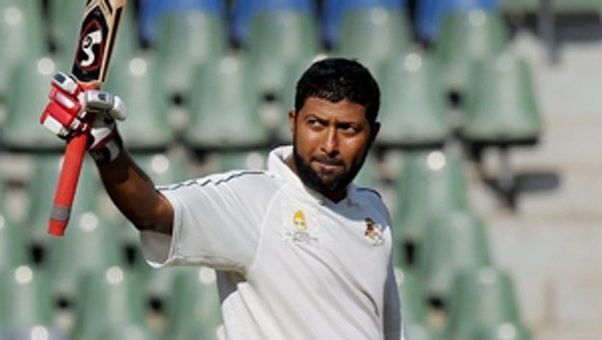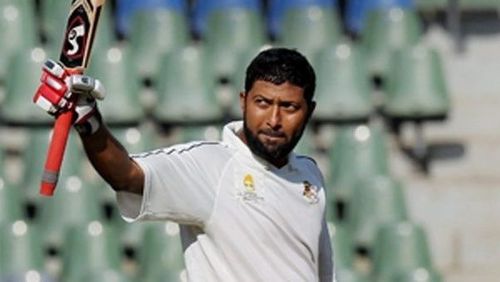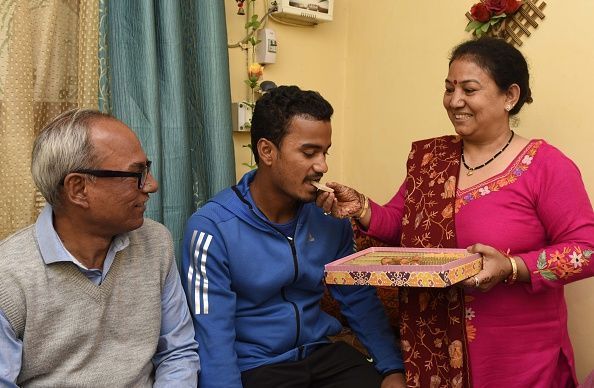
Salaries for Indian domestic cricketers have increased, but have they increased enough?

Cricket is a game of uncertainties. Tens of thousands of boys dream of playing for India but only 10 or 15 of them make it to the Indian side at a time. This uncertainty is seen not only at the international level but also at the domestic level; we have representations from only 28 teams and there are only so many spots.
There's a massive difference in the pay structure at the domestic and international levels, and that's quite understandable. The rigours of international cricket do demand a compensation in equal measure, but at the same time, the share of the domestic cricketers can be given a second thought.
In today's day and age, a cricketer who's played domestic cricket for six to seven years cannot be, in my humble opinion, considered successful. However, it cannot be denied that the pay at the domestic level has improved significantly from the time I made my first-class debut back in 1999.
From Rs. 5000 to Rs. 40000 per Ranji game
I still remember my first paycheck for a Ranji Trophy game. I made my debut for Haryana and my first match was against Saurashtra. Back in '99, travelling in the Rajdhani Express was a big thing, and before I could come to terms with the fact that I was taking my first strides in domestic cricket at the age of 18, Nitin Goyal, my teammate, came to me with a stack of fifty-rupee notes. Those were five thousand rupees served in cash, which made the stack look healthier than what it actually represented, and I was overwhelmed.
At first, I didn't know where or how to keep them. Aman Kumar, the then Haryana team manager had sent the amount through Goyal, and I cannot help but remember their names.
From 1999 to 2013, when I played my last first-class game, this match fee had multiplied manifold. At the time of my final first-class game, I was paid a match fee of Rs. 40000 plus the revenue share from the BCCI's central pool, which when combined amounted close to Rs. 1.25 Lakhs per four-day game.
However, all said and done, the players incur significant expenses that at most times outweigh these earnings from the game. If you earn from playing seven first-class matches and as many List-A games in the year, the spendings on purchasing equipment and kit would exhaust most of your earnings.
In this era of professionalism, you necessarily have to take care of your game, your practice sessions, your fitness, and equipment, and to afford all of these services, the amount paid to you at the domestic level comes up short.
I am not sure if all members of a Ranji Trophy squad are paid equally or they are contracted. But all of them necessarily have to hit the gym, take supplements, practice regularly and buy new equipment from time to time.
Your team may provide you with bats, but you need to buy spikes on your own. Hence if you play domestic cricket for 8-10 years and all of what you earn gets spent on the maintenance that your body demands, you're eventually left with nothing.
Also, the facilities provided to the Ranji players aren't as good or as high-class as those provided to the internationals. For international cricketers, everything is on the house. The board takes care of their injuries as well.
Now, however, and it is a welcome move by the board, rehabilitation facilities have been provided for those domestic cricketers who are recommended to the NCA by their respective state boards. So yes, attention is being paid to domestic cricketers but a lot still needs to be done.

How much do the domestic cricketers save?
The sources of income increase once you play international cricket for India. You have your central contract, your match fee, you play the IPL, and then, of course, there are deals and endorsements. So it's not just money from within the game which isn't the case for domestic cricketers.
All those who are now playing for India have come through the domestic channel after spending five to six years there, and hence, it is critical for the BCCI to take care of those cricketers. As I said, it's an uncertain game and hence the players need to have a cushion, a sense of security that they belong at this level, and that can be done by beefing up the pay a little so that they can save for themselves.
Also, there aren't many jobs for the cricketers to pursue on the sidelines. I consider myself very lucky that I was roped in by ONGC (Oil and Natural Gas Corporation of India) and they not only provided me with a full-time employment but also gave me the comfort of focussing solely on my cricket, as there wasn't a concern about getting a job thereafter. Companies like ONGC, Air India, and the state-run Railways used to be the major employers for cricketers during those days. Railways still remain as one of the largest employers.
To add to these, there were banks who had their own teams, as club cricket was the norm back then. These banks used to send their teams to tournaments around the country such as the KSCA tournament and the DY Patil tournament amongst others.
But now, things have changed. Since the inception of the IPL and the extended domestic season, players aren't readily available for the clubs and they are only hired on contractual basis for 3-4 years and are let go thereafter. Therefore, it is evident that the job security for these players is minimal.
Things are even more diabolical for the junior teams. I have been associated with the junior teams for the past three years and have worked in different capacities at the NCA, the Assam Cricket Association, and the Goa Cricket Association, and I understand the difficulties that the junior cricketers go through.
The match fee for a four-day game for the U-19 cricketers is approximately Rs. 10000, and hence, if you play 6-7 matches in a season, you make close to 60000 from your match fee. Add to them 4-5 limited-overs games, for which they are paid Rs. 2500 per game, and the total barely reaches Rs. 70000.
This amount for a whole season of cricket doesn't do justice to the amount of work that they put in, let alone the expenses on their game -- purchasing kit, equipment et al, especially at an age when most of them don't have a stable source of income and are mostly dependent on their parents.
Hence, it is essential for them to be given a raise even if it comes at the expense of the senior men's team. For instance, if you pay a senior player Rs. 1.75 Lakhs, instead of his stipulated match fee of Rs. 2 Lakhs, and the balance amount of Rs. 25000 -- which is big enough at the junior level -- can be passed on. I'm all for an increase in pay at all levels, but if at all there is a disparity, it must to bridged to whatever extent possible.
Until some time back, 26% of the board's central revenue was dedicated to the players. Half of which (13%) was reserved for the international cricketers, and the other half was allocated to all the other cricketers who participate at various levels -- senior domestic and junior under-19.
Out the 13% set aside for the domestic players, 10.6% was for the senior first-class players and 2.4% was for the juniors. So if you look at it, a Ranji Trophy player earns close to Rs. 1.50 Lakhs per game that totals to approximately Rs. 10 Lakhs per season, given that you play 6-7 matches in a season.
You play for 10 years in the domestic circuit and after a decade of services, you're left with no savings. Playing domestic cricket for 10 years is an achievement in itself, and yet at the end of it all, I doubt that you can call yourself successful unless you're playing the IPL.
I'll give you examples here. Wasim Jaffer, a domestic legend in popular opinion, who played years of domestic cricket apart from playing for India would not have saved in his entire career as much as someone like Pawan Negi, to be specific, earned through one IPL season (Rs. 8.5 Crores in 2016).
Jaffer played for India, scored a double hundred in the West Indies and has been playing domestic cricket for close to two decades (having made his debut in 1996-97 FC season), but if you compare what he earns to some of the IPL cricketers, you'd know.
This is not to say that those playing the IPL should not be making as much as they are. I am all for cricketers earning more, but those who toil for so long must have enough in the bank when they decide to call it a day.
Changes since 2003
I think sponsorship for Ranji games is the way to go forward. And there have been certain brands that have their associations with different teams. Madhya Pradesh, Mumbai, and Tamil Nadu, amongst others, do have sponsors for their jerseys.
Apart from this, matches are being shown on television -- one game on one of the channels of the official broadcaster and one game is streamed live -- which augurs well. So the board is doing its bit and the state associations should also cooperate and get sponsors for their teams.
This would happen when there's more TV coverage of the league as well coverage across platforms. Big teams, for example, Karnataka can use their star players, such as KL Rahul, to leverage sponsorship.
At the same time, the BCCI have, in the form of one-time benefits, done a lot for those who played during the days when there wasn't as much money in the coffers as there is now. One-time benefits have been provided to players who played before 2003; the logic behind it was that the payments before 2003 were significantly lower. Players with more than 75 first-class matches were paid approximately Rs. 25 Lakhs and those who had played more than 25 first-class matches were made eligible to receive pensions.
Pensions are being paid out to former domestic as well as international cricketers. So the board is doing its bit to a large extent. There are training programs put in place for umpires, scorers, trainers, referees, and physios as well apart from the domestic players, which is a good initiative, and all of them are paid pensions.
Therefore, while the contribution of the BCCI cannot be negated at all, it must also be remembered that the expenses incurred in this professional era are, at times, too much and that a cricketer, after having finished his career, must have savings to help sustain himself for the life that awaits after cricket.